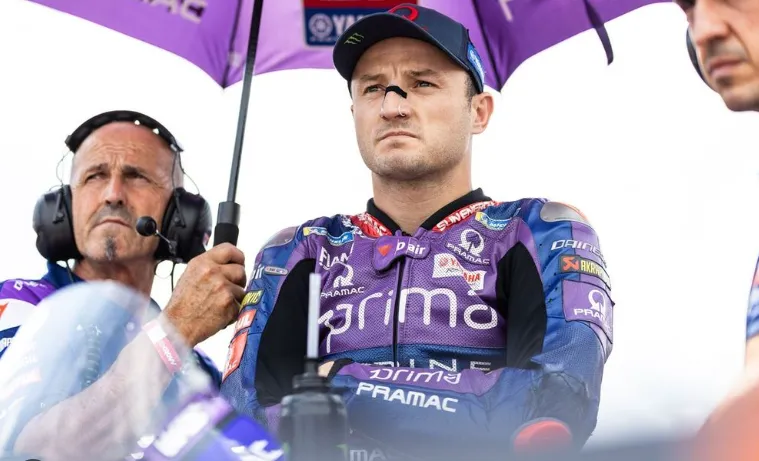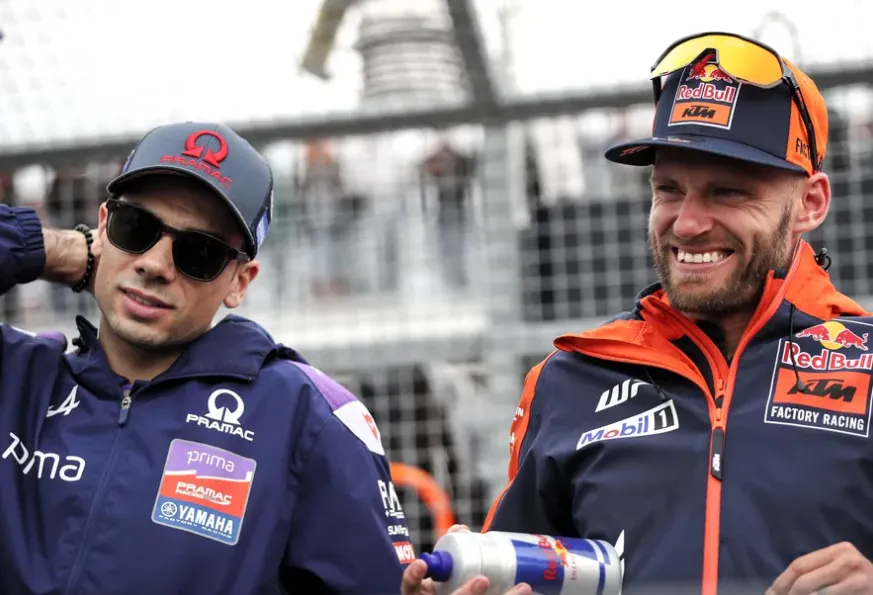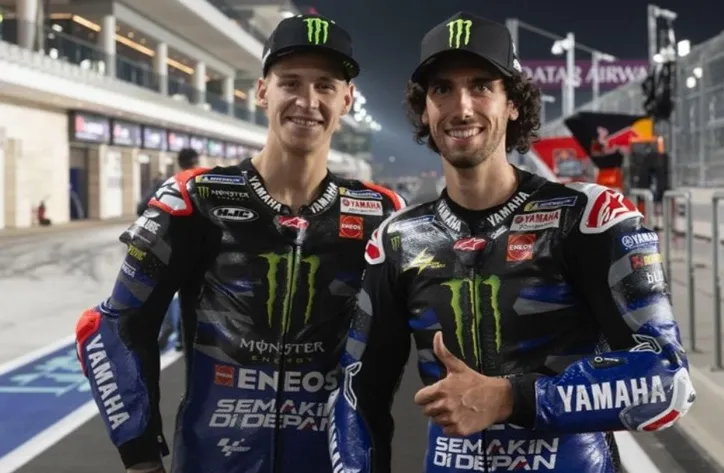
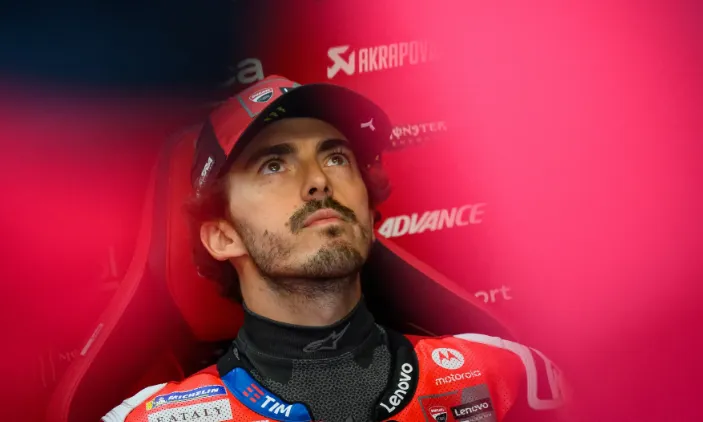
Pecco is facing serious issues – Did Marc Marquez know but stay silent?
Francesco Bagnaia’s hopes of clinching another critical MotoGP victory took a disastrous turn at the British Grand Prix, where a race that started with promise ended in the gravel after a mysterious loss of grip. The reigning World Champion was in contention early, running second behind Fabio Quartararo, when a crash involving Marc Marquez triggered a red flag—a moment Bagnaia would later describe as the turning point of his race.
Before the stoppage, Bagnaia was feeling confident on his Ducati Lenovo Team machine. But after the restart, everything went wrong. A change in rear tyre—standard procedure during a red flag—left him with a drastically different and uncontrollable bike.
“My feeling was good,” Bagnaia explained. “After Marc’s crash, I was there with Fabio, the grip was good. But when we restarted, we changed the rear tyre, and from that moment, nothing worked.”
Post-Red Flag Chaos: “Sliding and Spinning Everywhere”
The difference in Bagnaia’s performance was night and day. While he was comfortably holding pace before the red flag, afterward he quickly dropped through the pack. The Ducati was unmanageable—rear-wheel spin, lack of traction, and an inability to hold lean angle made riding at the limit impossible.

“I was sliding and spinning everywhere,” he said. “No traction. Everyone was overtaking me.”
Eventually, the lack of rear grip caught up to him. Entering turn seven, Bagnaia tried to lean the bike as usual, only to lose the rear completely and crash out.
“It was already a difficult situation, but with a problem like this, it’s worse,” he added. “It was even difficult to make a lean angle because as soon as I was reaching 58 or 59 degrees, the rear started spinning. It was really strange.”
Alex Marquez Could’ve Dominated, Says Bagnaia
In a revealing comment, Bagnaia highlighted how Alex Marquez, who had crashed in the first start, would have likely dominated the race had he remained upright.
“Without the crash, Alex was winning the race with a hand behind [his back],” Bagnaia claimed. “He was much faster than everyone else.”
But like Bagnaia, Marquez suffered after the red flag and restart. Forced to use his second bike, he too lost his initial feeling and competitive edge.
Marc Marquez “Hid” Ducati’s Shared Struggle
One of the most eye-opening revelations from Bagnaia was his acknowledgment that Marc Marquez had been masking a serious underlying issue with the Ducati all weekend. While other factory riders struggled with front-end feel and setup challenges, Marquez managed to ride through the difficulties—creating the illusion that the bike’s problems were under control.
“Marc was hiding the problem that we had all weekend: he did a fantastic job,” Bagnaia admitted.
This was particularly notable because the British Grand Prix marked the first time in recent memory that no Ducati rider stood on the podium—something that might not have happened had Quartararo not retired from the second start due to technical issues.
“Without the problem of Fabio, it’s the first time in I don’t know how many races that a Ducati wasn’t on the podium,” Bagnaia pointed out. “It’s something to reflect on.”
A Call to Action for Ducati: “We Are Stuck or Going Worse”
Bagnaia didn’t mince words when addressing Ducati’s current trajectory. While rivals are clearly improving, he believes Ducati’s factory team is struggling to evolve, stuck in a performance plateau—or even declining in certain areas.
“Others are improving, and we are stuck, or even going worse,” Bagnaia said. “So, we need to do a step.”
He also reaffirmed his trust in his team and engineers, acknowledging that they are already hard at work searching for a solution to the growing concerns with setup consistency, grip, and tyre performance.
A Cautionary Tale for the Championship Chase
With multiple rivals—including Jorge Martin, Pedro Acosta, and now Marc Marquez—finding new levels of competitiveness, Bagnaia’s crash and Ducati’s struggles in Silverstone serve as a serious warning for the remainder of the 2025 MotoGP season.
This isn’t just about one bad day. It’s about a pattern of inconsistency—a situation where a bike that should be leading the championship is increasingly being outpaced by competitors who are adapting faster.
Bagnaia’s crash may have robbed him of valuable points, but the larger concern is how Ducati handles the systemic issues that are now being exposed more frequently.
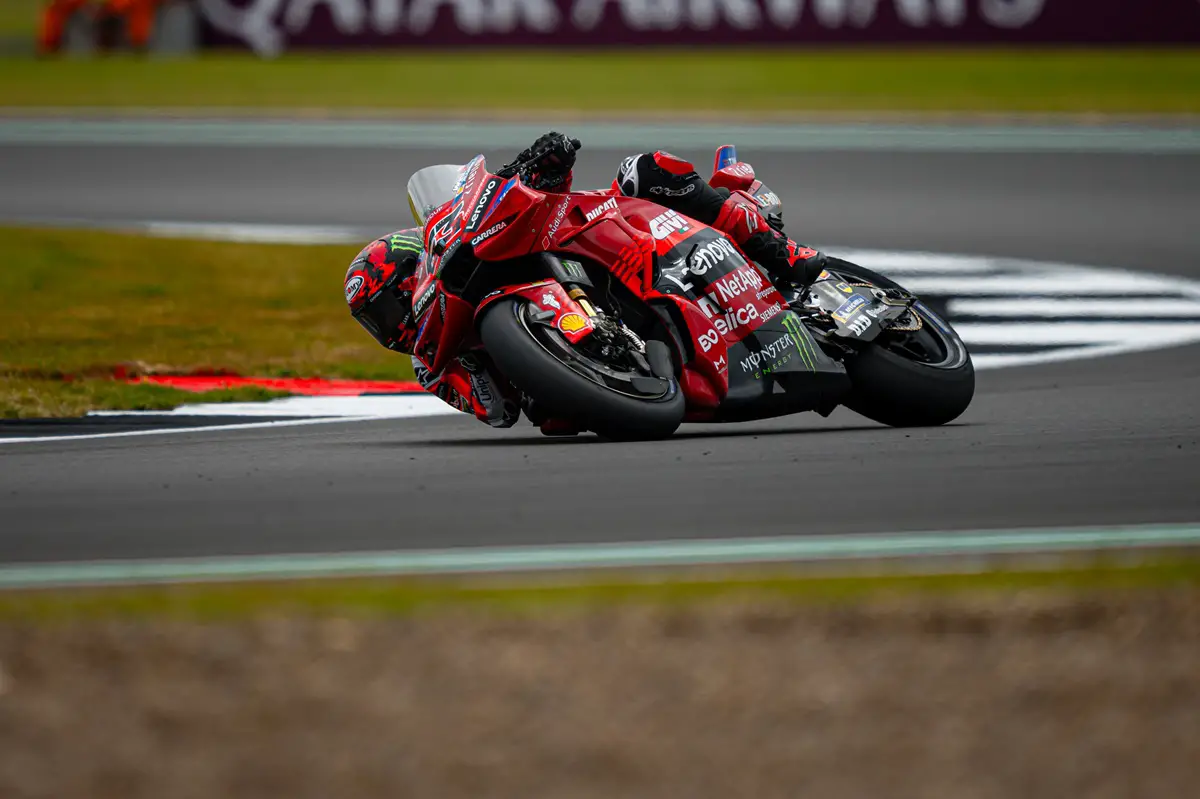
Conclusion: Ducati Must React—Or Risk Falling Behind
Pecco Bagnaia’s crash at the British GP was more than just a moment of misfortune—it was a reflection of larger mechanical and strategic flaws within the factory Ducati setup. While Marc Marquez’s brilliance masked the extent of these issues, Silverstone made it impossible to ignore.
If Ducati wants to retain its dominance, changes are needed—and fast. With rivals closing the gap and internal issues surfacing, Bagnaia and his team are at a critical juncture in the 2025 championship race.








